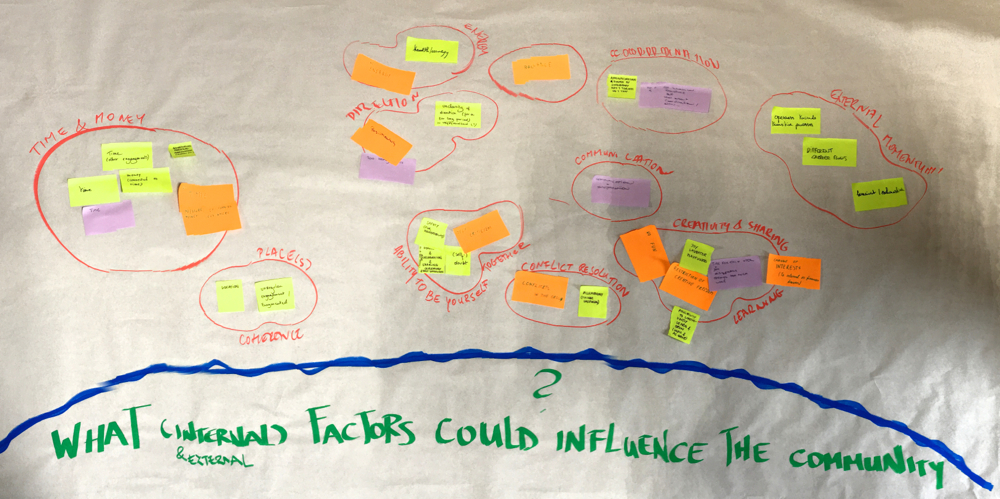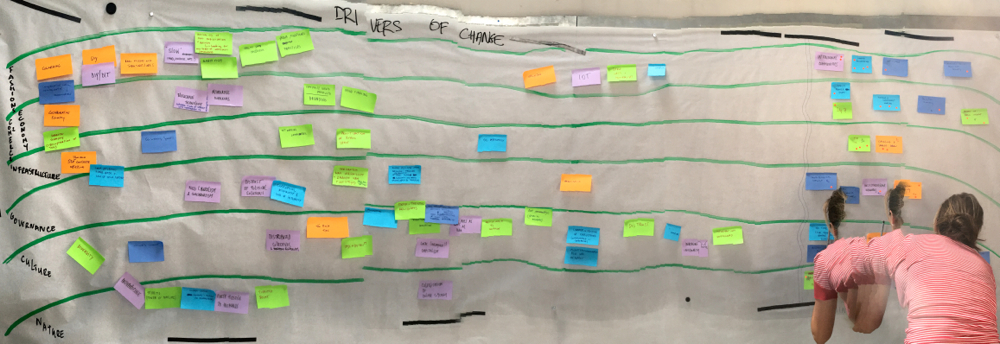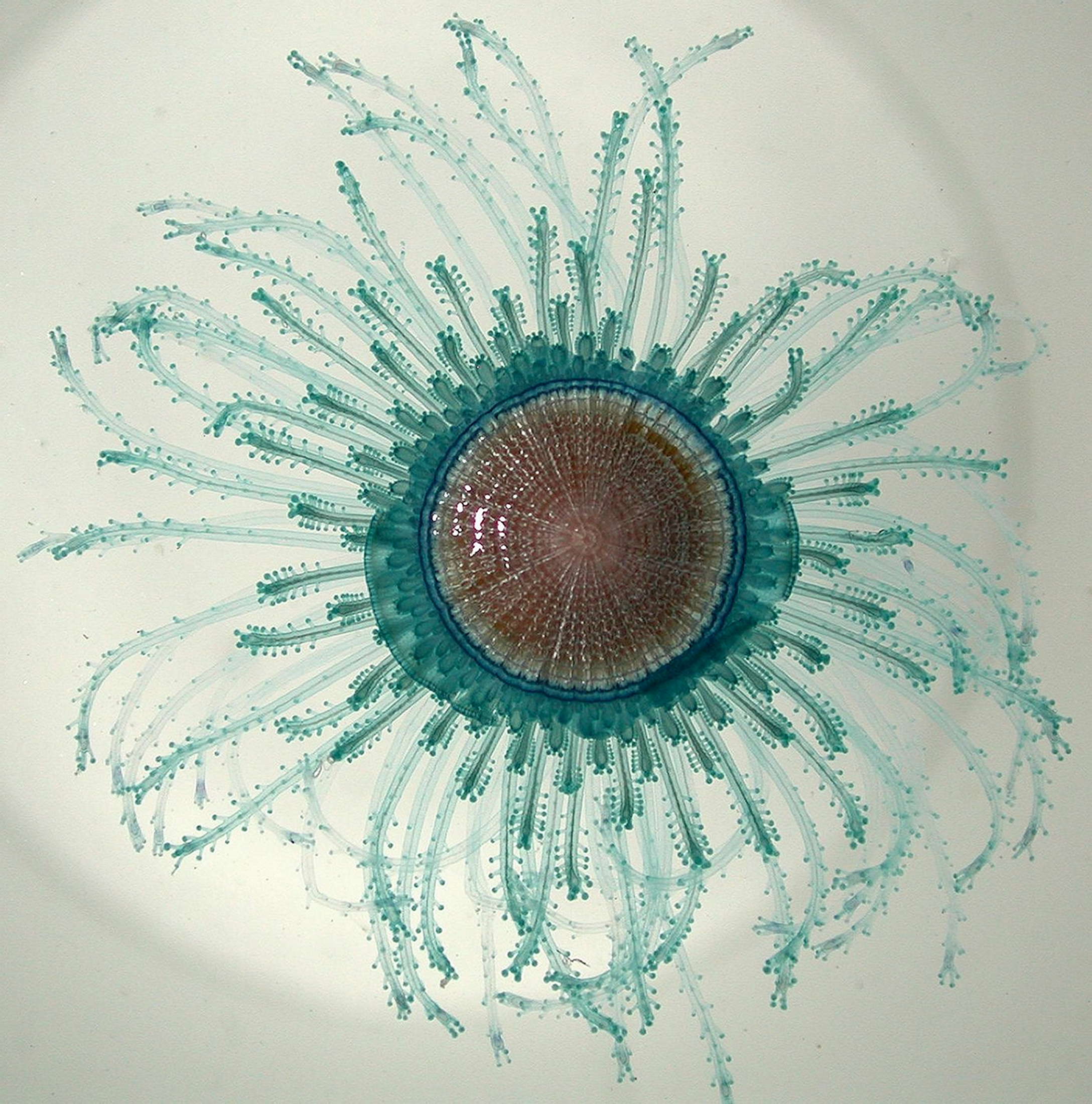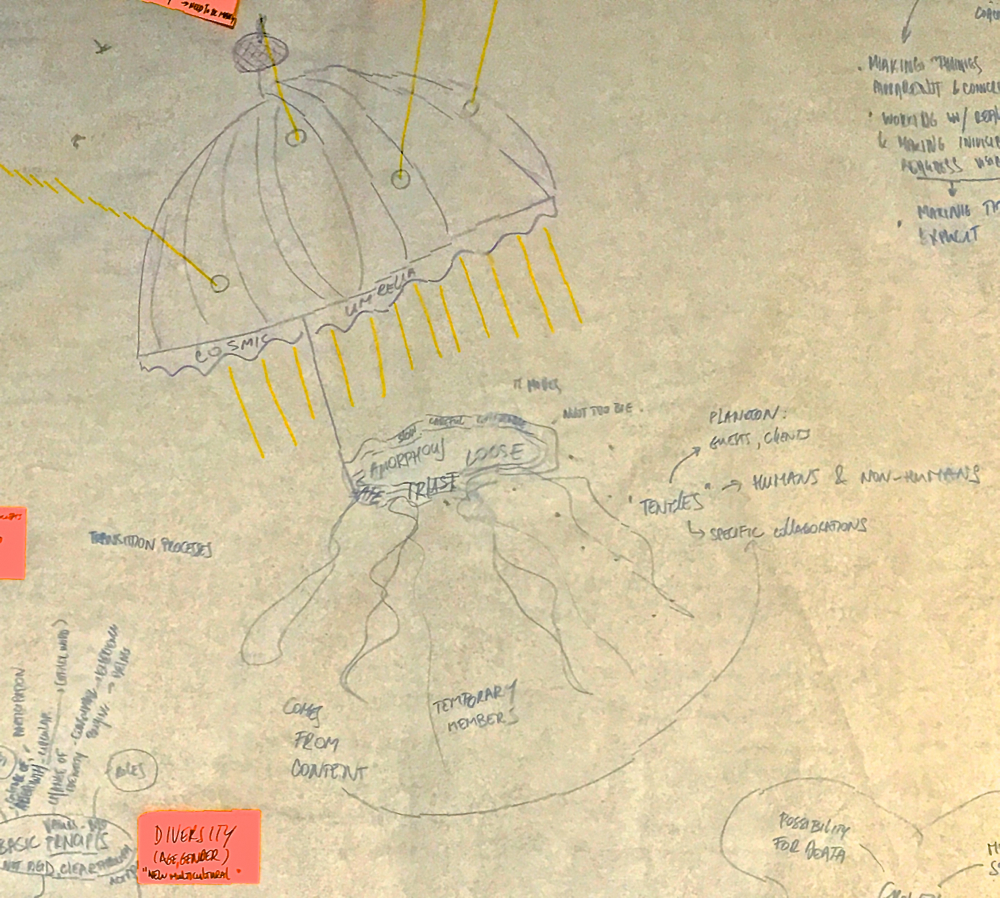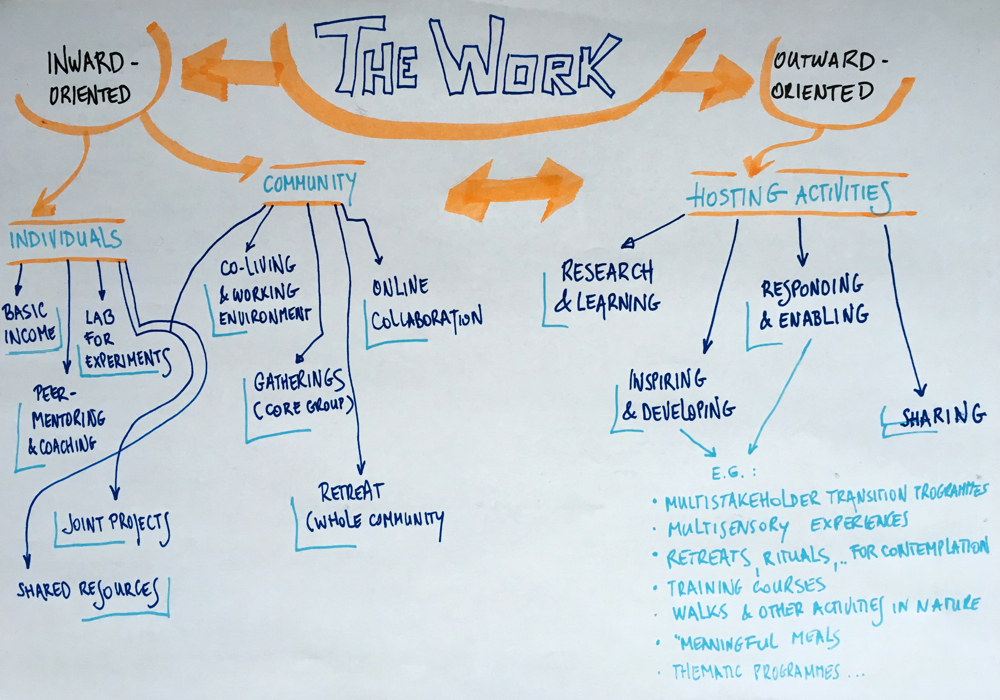Table of Contents
Hosting Gathering June 2016
10th June 2016 @ FoAM Bxl
Core questions: What do we know today and what do we want to learn about the hosting community? What could be our place in- and contributions to the world?
Flow: See attached document
(The notes from the second gathering in June can be found on activity mapping)
Framing
Since the beginning of 2016, our gatherings were inward oriented, looking at our inner resources and needs for the hosting community. We began in January 2016 by asking ourselves “Should we form a community of practice and if so, what could it be?” We started from individual needs and offers and ended with a proposition for a unique community functioning as a chest of drawers, lab and/or a studio.
In February we asked “Who are the people involved and what is our collective identity?” We created holistic profiles for the participants and found that we have diverse skills & experiences and common ground of gender, age & sector (this lack of diversity could be a weakness). We then looked at our collective identity (which we first doped “bill”, then “ingrid”) and created it from our common dreams, nightmares, principles, values, passions and directions. A few key qualities of this identity are:
- an open and evolving network of curious and generous personalities, even including non-human beings (imagine mycelial networks)
- embracing all ways of knowing, from intuitive and sensual, to analytical and synthesizing
- a drive to personal, societal and systemic transformation and healing, a practical and dynamic attitude,
- a holistic intention to connect and blend diverse sectors, cultures
- a strong artistic sensibility, making art a part of life
- a romantic embracing of nature, botany, slowness and the vegetal mind
In April 2016 we asked “If we looked deep inside each of us, what would we like to design together?” Many possible and existing activities were listed and a few threads emerged:
- community oriented (our gatherings, peer coaching/mentoring/advice…)
- client oriented:
- multi-stakeholder, systemic transition/transformation programmes (Cross-sectorial experiments and creative processes (nurturing creativity, focusing perceptions, enabling change, unexpected happy endings, social innovation)
- multisensory experiences (mind-body integration, zinnestrelend)
- retreats, rituals & other experiences and tools for presence and contemplation
- training (“life changing”) courses (personal and professional growth)
- nature-related: walks, seasonal rituals
- “meaningful meals” (fascination lunches, open sauces, etc.)
- connections between personal and systemic “healing” and growth
The gathering on the 10th of June is about widening our view a bit, looking at the community from a bird’s eye perspective, to include a wider system in which we exist. From this view of the present we’ll try to to find out what a preferred future of the community could look like.
Membrane
How would we describe the clothing in which we like hosting?
Feminine, agile, comfortable, soft, perky, proud, strong, adaptive, spacious, elegantly practical, playful, cheerful, light, deep, calming, sparkly, colourful (accents) and with open arms.
Could we extrapolate these qualities to the 'membrane' of our community, a way we’d like to appear to the outside world?
KPU
What do we know and assume about the hosting community? What would we still like to know about the hosting community?
What do we know?
- We are a group of resilient women
- We trust each other
- There is a strong creative energy between us, a will and desire to do things together
- Content and contemplation connect us
- We deal with transition processes (we want change)
- We all have experience with hosting
- We need to earn money
- Our community exists as an amorphous ecology
- We invent through connecting
- We have a deep connection to nature
- We subscribe to continuous (personal and professional) growth and learning (from each other)
What do we presume?
- We are engaged for a long, sustainable trajectory together
- We can become more resilient as a group, an ecology of practitioners
- We can make a living through the hosting community
- We have implicit healing qualities (individually and as a group)
- Our community is a light structure
- Our work is unique and relevant beyond the community itself
- We influence systems through individual practices
What is unknown?
- Do we need a name, and if so what would it be?
- What are the boundaries of the community?
- Is a more concrete focus needed?
- What are our basic principles and values?
- How to make money through the community?
- How do deal with growth?
- Are we a horizontal structure or “lead by” 1-2-3… members?
- Do we need a physical community space?
- What holds the community together in the long term (personal relationships, “mission”…)?
- If and how to increase diversity of the group (gender, age, sector…) without diluting the sense of trust and safety?
- What skills and experiences are we lacking?
- Whom will we work for/with?
- How do we deal with having members distributed across different countries?
- How does one become a new member?
- Are we a fixed group or an organic community?
Key factors
What internal and external factors could influence (evolution of) the community?
- Time and money (other engagements, pressure of earning money elsewhere, need to make clear practical agreements, irregular engagement leading to fragmentation)
- Health, energy and balance
- Ability to be yourself, together (safety to be vulnerable, self criticism, (self)doubt; honouring, celebration and sharing ceremonies and deep experiences - taking care of the group)
- Direction (positioning, danger of having unclear direction for too long “vrijblijvendheid”)
- Co-ordination (administration should be done by somebody who thrives on that; we like a non-hierarchical structure, but the role of co-ordination will likely be necessary in the long term)
- Internal and external communication (and interpretation)
- Creativity, sharing and learning (if any of the following would be missing in the long term, the community would likely dissolve: joy, laughter, playfulness, fun, creative freedom, time for each other, possibility to continuously learn and grow)
- Place(s) and location(s)
- Conflict resolution (disharmony - things unspoken; conflicts in the group)
- External momentum (openness towards transition processes, need for 'enabling/facilitative’ leadership (as opposed to 'imposing'), different career flows, interest in work-related burnout/exhaustion…)
Drivers of Change
What emerging macrotrends, forces or developments could impact the (development of) our community?
Change drivers most relevant for the hosting community (from most certain to most uncertain):
Fast changing fashions (arts, technologies…):
- Intentional communities
- People longing for reconnection
- Art & Care
- Answers to a “burnout society”
Commerce and economy:
- Addiction to money and ownership
- 24/7
- Flexible and independent working
- Peer-to-peer economy
- Dreams of basic income
Infrastructure:
- Shared spaces
- Co-housing and sharing green
Governance
- Cross-sectorial interest
- New organisational models
- Multistakeholder networks
- Participation society
Culture
- NO TIME (for playing, having fun and living)
- Angry bodies (physical bodies rebelling against societal/economic pressures)
- New multicultural
- Posthumanism and technological singularity
- Culture of degrowth (circular…)
Nature
- (In)Visibility of nature
- Awakenings
- Rewilding
"Umbrellyfish"
A living, symbiotic community
The shape of the community is loose and amorphous, like a jellyfish or a hydrozoa, a symbiotic colony of various organisms. The main body of the community is a relatively small core group, bound by mutual trust. The strong personal relationships between its members make the core a safe and comfortable zone. The core members come together in regular gatherings and have different tasks and roles in governing the community. The changes to the core are slow and careful, so as not to disrupt the trust and safety of the group. There is movement of the core members (in and out), but the movement is much slower than the fluctuation in the rest of the community (“the tentacles”).
The temporary members and occasional collaborators (human and non-human) form the widely outreaching “tentacles” of the community. The people in the core work with these members in specific, content-driven collaborations. They can be invited to larger gatherings but they do not govern the community. The “tentacles” are diverse and multicultural.
Around the body and the tentacles are other organisms with whom we have mutually beneficial relationships (clients, guests, advisors, teachers, funders…). The community “feeds” these entities through its hosting activities, with the aim to make them stronger and better able to act within their own communities and systems. The ideas of the hosting community are disseminated through interactions with these organisms, thereby injecting the hosting DNA in other contexts.
As an organic entity, the community is able to grow and decay. Growth is primarily understood as “inner” (mental, spiritual) growth of the members. The core body of the community doesn’t grow much in size (no more than ~12 members). The number of “tentacles” (temporary members) changes depending on external influences and inner needs. If one of the core members moves to another country, they can “spawn” related communities, but the community cannot be “cloned” (as in a franchise). “We don’t want to fill the sea with jellyfish”. Spawned communities mutate and adapt to their new environments, but remain true to the basic principles and values of the original community. Finally, if the internal and external conditions do not support its existence any longer, the community can consciously cease to exist and die.
The work
The work of the community has inward-oriented and outward oriented parts. Inward-oriented work is meant to support individual members and the community as a whole. For individuals, the community provides a system of basic income (implemented through blockchain technologies) and programmes for personal and professional growth, guided by peer-mentors. The community offers advice and coaching for individual projects, as well as a place to experiment with new hosting techniques in a lab setting. Furthermore, there is a possibility to initiate and design collaborative projects with other community members, and receive co-ordination support and other communal resources.
Aside from individual support, inward oriented work is also dedicated to community development. Several core members constructed a co-living and working place (surrounded by silence and nature), acting as a permanent hub and lab for life-experiments of families and individuals. Artistic, architectural, horticultural and gastronomic developments are in continuous development here. There is a dedicated space for community celebrations, parties, rituals and ceremonies. In this hub, there are temporary sleeping and working places for visiting members as well.
People who live elsewhere come together in regular gatherings and collaborative spaces online. The most frequent gatherings are meant for the core members (the body of the jellyfish), while the whole community (the body and the tentacles) comes together at least once yearly in a retreat. During the retreat people get to know and connect with each other in a safe space. They are engaged in a range of activities, several happening in parallel; from quiet one-to-one conversations to uproarious feasts and concentrated workshops, which organically emerge from the individual and collective needs. The retreats function akin to temporary monasteries. The rhythm of the retreat has structured times for active and contemplative tasks, with regular breaks for convivial meals and moments for silence. The atmosphere at the retreats is joyful and playful, allowing the lightness of creative energy to flow unimpeded.
Outward-oriented activities encompass hosting in the widest sense of the word - from workshops to rituals, retreats to multi-sensory dinner parties. Hosting is explored in the following ways:
- research and learning (emerging questions and themes, experimental techniques…)
- inspiring and developing (internally driven design of thematic programmes and new hosting approaches)
- responding and enabling (on request from the outside; customised hosting of workshops and events)
- sharing (writing, speaking, teaching, “spreading wisdom”).
Community in the world
The (core) members are the stewards of the basic principles and values of the community. They foster a practice-based participatory culture, energy descent, steady-state/degrowth and circular economy, moving from consuming to experiencing and from buying to being. The activities of the community are guided- as well as sheltered by a connection to “the cosmic umbrella” - a sense of belonging to an ever widening system of ideas and energies, gathered through continuous “horizon scanning” and broad, open awareness.
The community contributes to individual and systemic transitions by uncovering invisible aspects of reality, by “rewilding” contemporary culture and (re)connecting humans to themselves, to other humans, to other beings and our living environments (on different scales), “becoming re-enchanted with the magnificent world in which we live.” (-Marc Bekoff)



